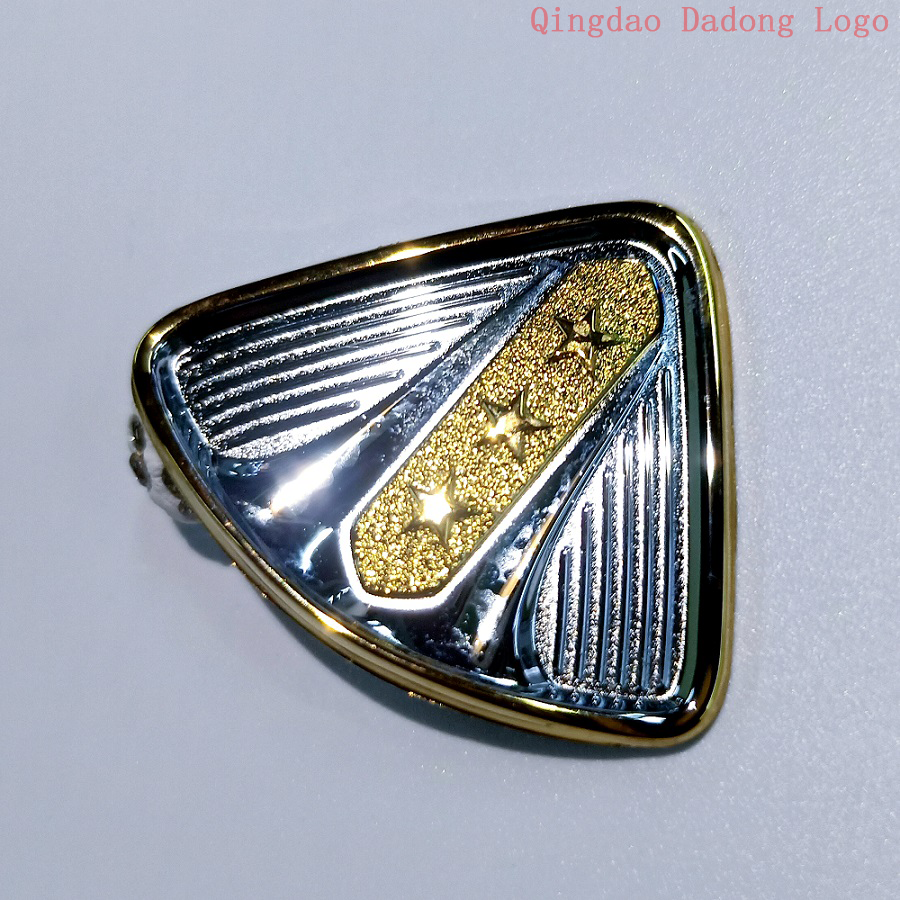NEWS
Teach you how to distinguish nickel plate signs from stainless steel signs and other material signs
Writer:admin Time:2023-06-09 10:49 Browse:℃
Signs are common in our daily lives and are made from different materials and processes. The focus of this article is also to introduce the material classification and main application fields of signs, making it easy for everyone to distinguish different materials when purchasing signs and have a general understanding of processes and costs.
1、 Nickel plate label
Electroforming technology first appeared in Russia in 1841, and its widespread industrial application was around 1950-1960, with more widespread use in China in the late 1990s.
The manufacturing process of the nickel sheet thin label is to use the cathodic deposition phenomenon in the electrochemical process to carry out molding processing, that is, use the conductive prototype as the cathode, use the electroformed metal as the anode, and use the metal salt solution of the electroformed material as the electroforming solution. Under the effect of the DC current, the metal plate at the anode will gradually dissolve into metal ions, which will be continuously added to the electroforming solution to keep the concentration of the electroforming solution in balance; The metal ions in the metal salt lose their electrons and become positive metal ions, gradually moving towards the cathode's primary mode and depositing, forming an appropriate thickness after a period of time (the thinnest standard can be accurate to 0.04mm).
Nickel plate label products have a wide range of applications, including mobile phone cases, protective covers, electronic digital product cases, home appliance product cases, gift box packaging, and other products. The thickness of nickel plate thin labels can be accurately controlled within the range of 0.05-0.15mm, and the surface can be processed with processes such as wire drawing, mesh pattern, vacuum electroplating coloring, and oil spraying coloring.

2、 Stainless steel signage
The stainless steel label is made of 304 stainless steel, which has good corrosion resistance to atmospheric and freshwater media. Moreover, the decorative effect obtained through corrosion, polishing, and wire drawing is very high-end and beautiful. Stainless steel signs are generally divided into three types: concave type signs, convex type signs, and concave convex combination signs. The characteristics of stainless steel signs are corrosion resistance, good oxidation resistance, weather resistance, strong solvent resistance, strong three-dimensional sense, and exquisite and beautiful metal color.
Stainless steel nameplate products have a wide range of applications. Some electronic digital product shells, such as Mobile phone case, mobile phone leather case, notebook shell, as well as packaging gift boxes, are decorated with high-grade nameplate with stainless steel lettering and concave effect.
3、 Aluminum alloy signage
The popular material in the 1990s is aluminum. Compared with traditional materials, it does not rust, is lightweight, and has low cost. The large signs and warning signs we usually see outside are made of aluminum alloy, such as signs on the road and some billboards made of aluminum alloy. There are not many small signs and nameplates made of aluminum material, because products such as logos and nameplates made of aluminum material are not as exquisite as stainless steel, and the glossiness is relatively poor. Additionally, the surface of aluminum signs is prone to scratches and scratches.
4、 Plastic signage
The electric vehicles and bicycles we usually see outside have plastic signs, and many plastic signs and business cards made of plastic can also be seen in public places such as hotels and guesthouses. Plastic signs are generally made of plastic material and screen printed. The biggest feature of this type of sign is its waterproofing, low price, and mass production. It can be directly pasted with neutral glass adhesive and paint surface. The disadvantage is that the appearance is not as exquisite as the metal signs.
CATEGORIES
LATEST NEWS
CONTACT US
WhatsApp: +8615806503075
Tel: +8615806503075
Email: percy@dadonglogo.com
Addr: 7 Tonghe Road, Pingdu, Qingdao
